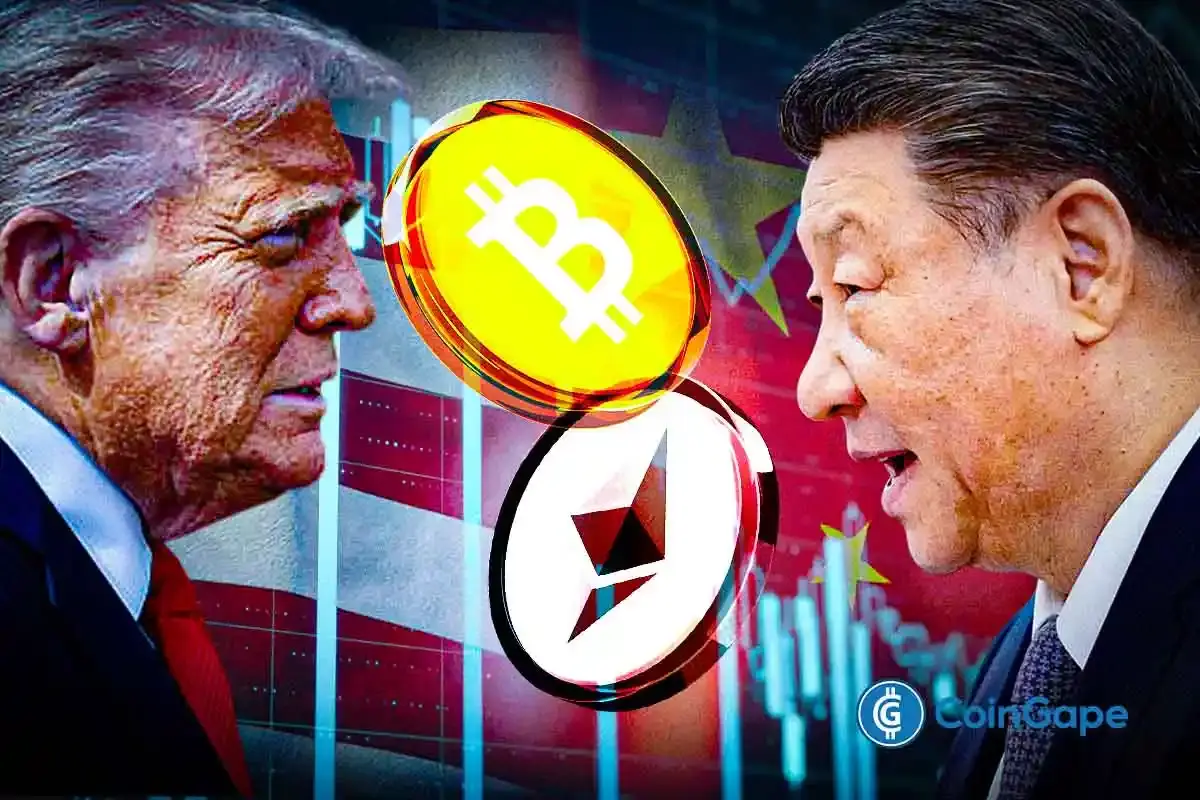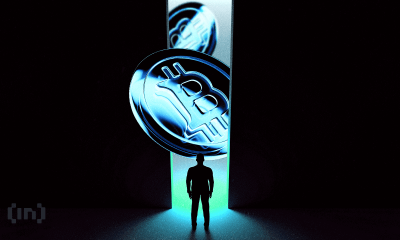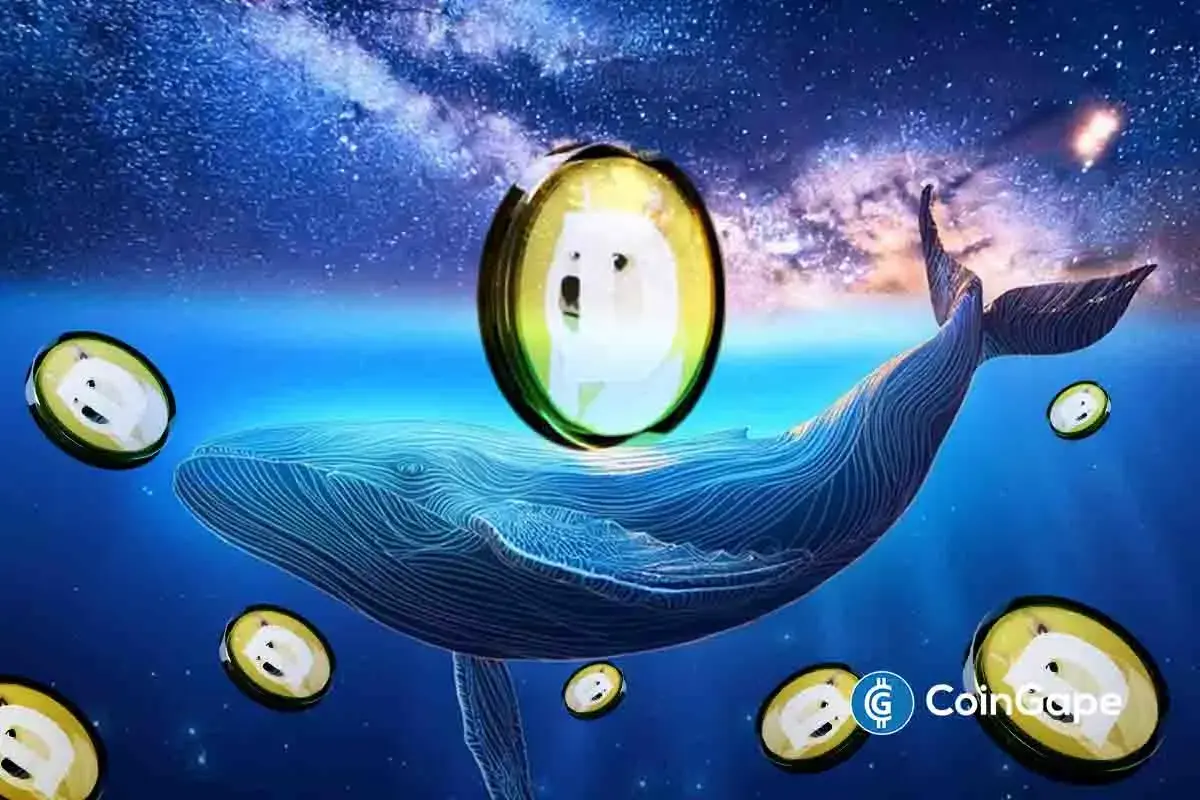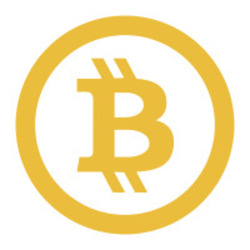Market
Canada’s New PM Carney Is a Bitcoin Skeptic—What It Means


Mark Carney, the former governor of both the Bank of England and the Bank of Canada, is poised to become Canada’s next prime minister. However, he has long been skeptical and strongly critical of Bitcoin (BTC).
On March 9, Carney secured an overwhelming victory with 85.9% of the vote. He is expected to assume office in the coming days.
Mark Carney’s Views on Bitcoin
Carney will become Canada’s next Prime Minister, replacing Justin Trudeau, who resigned in January 2025 after nearly a decade in power.
Although Carney has never held a seat in Parliament, his experience managing economic crises and international reputation have garnered significant support within the Liberal Party.
However, Carney’s rise to Canada’s new Prime Minister position does not appear to be a positive signal for the crypto market. For years, he has expressed deep skepticism and sharp criticism of Bitcoin (BTC) and other decentralized cryptocurrencies. He formed his stance during his tenure as Governor of the Bank of England and has reiterated it in the years since.
“Canada’s new Prime Minister Mark Carney, a known critic of Bitcoin, previously labeled it [BTC] as having serious deficiencies,” said X user EdGeraldX.
Specifically, in a 2018 speech on the Future of Money, Carney assessed that Bitcoin has “serious deficiencies” due to its fixed supply cap, which leads to price instability.
“The fixed supply of Bitcoin has sparked a global speculative frenzy, encouraging the proliferation of new cryptocurrencies,” he stated.
He likened Bitcoin to a “criminal act of monetary amnesia,” arguing that recreating a digital gold standard was a historical mistake. Carney believes Bitcoin and other cryptocurrencies are “poor short-term stores of value,” failing to meet the basic criteria of money, such as stability and usability in transactions.
In 2018, he warned that Bitcoin threatened financial stability if left unregulated, calling for strict oversight to curb illegal activities like money laundering and terrorism financing.
Carney Prefers CBDCs Instead
In contrast, Carney enthusiastically advocates for Central Bank Digital Currencies (CBDCs) while opposing Bitcoin. This view is somewhat similar to that of Indian regulators. He argues that CBDCs could expand banking access for individuals and businesses while enabling central banks to combat terrorism and economic crime.
“Carney calls Bitcoin’s fixed supply a crime, supports CBDCs, and now controls policy for a $1.9 trillion economy,” shared an X user.
Carney’s views on Bitcoin and cryptocurrencies align with and are arguably more rigid than those of his predecessor. In September 2022, Trudeau hit out at Pierre Poilievre, a pro-crypto politician chosen to lead Canada’s Conservative Party.
Carney assumes office as Canada faces a trade war sparked by US President Donald Trump’s tariff policies. The US has officially imposed a 25% tariff on Canada after suspending it in early February.
Carney’s anti-Bitcoin stance may lead to stricter regulations to control cryptocurrencies. He might focus on anti-money laundering measures and investor protection, similar to the approach he advocated at the Bank of England. This could affect the ETFs operating in Canada like the BlackRock’s Bitcoin ETF or 3iQ’s Solana ETF.
Additionally, Canada may soon develop a digital Canadian dollar, potentially diminishing the role of Bitcoin and altcoins in the economy.
Disclaimer
In adherence to the Trust Project guidelines, BeInCrypto is committed to unbiased, transparent reporting. This news article aims to provide accurate, timely information. However, readers are advised to verify facts independently and consult with a professional before making any decisions based on this content. Please note that our Terms and Conditions, Privacy Policy, and Disclaimers have been updated.
Market
Here’s What Happens If The XRP Price Closes Out This Week Above $2.25

XRP is back trading above, $2, and bullish momentum is gradually creeping back compared to its price action at the end of March and beginning of April. Crypto analyst EGRAG CRYPTO believes this week could highlight a turning point for a full flip into bullish momentum, and how the XRP price closes out the week will be very important.
According to the analyst’s outlook, which was posted on social media platform X, the current XRP candle on the weekly timeframe is hovering just above both $2.10 and the 21-week Exponential Moving Average (EMA). However, he noted that the real confirmation lies with if XRP can manage to close the week with a full-bodied candle above $2.25.
Why Is $2.25 Important For XRP’s Price?
The $2.25 level has now become more than just another short-term resistance. It is what EGRAG considers the final barrier to validating the recovery structure forming after March and April’s sharp retracement. His weekly chart shows XRP climbing out from a significant low after bouncing off the 0.888 Fib extension level and now stabilizing above the yellow 21-week EMA line.
The alignment of XRP’s price above both the $2.10 price level and this moving average adds credibility to the potential of a bullish continuation, but EGRAG makes it clear that a weekly close above $2.25 is the “lock-in” point. From a technical standpoint, this would mark the first full-bodied weekly candle above the 21W EMA since the past four weeks. If achieved, this can be interpreted confirmation that bulls have regained dominance and that a bottom was established on April 7.

Furthermore, it suggests that the April 7 bottom will continue to hold as support going forward. The chart also outlines close price targets at $2.51 and $2.60, with Fibonacci extension levels projecting even higher zones at $2.69 on the way to crossing back above $3.
Failing To Close Above $2.25 Could Reintroduce Unwanted Narratives
EGRAG also issued a cautionary note in case there isn’t a clean breakout. Should XRP fail to close the weekly candle above $2.25, he warned it could trigger a return of bearish narratives, including what he referred to as a possible “tariff issue.” This is referring to the recent tariff back-and-forth between the US and China in the past month, which has unbalanced the investment markets.
A strong rejection could see the XRP price pull back toward the $1.96 Fibonacci level or even lower into the broader support band of around $1.58 to $1.30. The white box region on the chart above would then become the primary battleground for bulls and bears if a close above $2.25 is not secured by the end of the week.
Market
Bitcoin and Ethereum Now Accepted by Panama City Government


Mayer Mizrachi, the mayor of Panama City, Panama, announced today that the city government will accept payments in crypto. It will accept Bitcoin, Ethereum, and two stablecoins for taxes, permits, fees, etc.
However, Mizrachi clarified that the municipal government has a legal requirement to accept these funds only in USD. It will exchange cryptoassets for cash with a partnered bank, presenting a severe limit to potential crypto adoption.
Is Panama City Accepting Crypto?
In the last few months, a tide of pro-crypto regulation has swept over many of the world’s jurisdictions. This obviously includes the United States at the federal and state levels, but many other countries are rising to the occasion.
Case in point, the mayor of Panama’s capital city just announced that the municipal government will accept payments in crypto.
“Panama City council has just voted in favor of becoming the first public institution of government to accept payments in crypto. Citizens will now be able to pay taxes, fees, tickets and permits entirely in crypto starting with BTC, ETH, USDC, USDT,” claimed Mayer Mizrachi, the mayor of Panama City.
Mizrachi went on to explain some previous efforts to accept crypto payments in Panama. Four years ago, a legislative initiative tried to enable crypto payments all over the country.
It got some traction but eventually stalled out in 2022. In 2023, the Supreme Court ruled the bill “unenforceable.” Since then, it doesn’t seem like any other serious efforts have made progress.
Panama City’s municipal government is circumventing the legislature to accept crypto payments, but the strategy has significant drawbacks. Mizrachi explained that public institutions must receive funds in US dollars, and he couldn’t circumvent this requirement.
In other words, any crypto payments will actually go to a partnered bank. The bank will actually custody (or dispose of) these assets, while the city only holds USD. Mizrachi’s effort avoids a contentious legislative battle, but its actual impact might be severely limited.
Although Panama has its own currency, the balboa, the US dollar has more legal standing in a few different ways. It’s a legal tender; public institutions have to accept it, and the balboa is actually pegged to the dollar anyway.
This is a very similar situation to what made El Salvador accept Bitcoin as a currency, as it also had to use the US dollar as its sole currency.
Mizrachi explained that this short workaround will increase “the free flow of crypto” through Panama’s economy, but it may not be that simple. Depending on the agreement between the city government and partnered banks, it could just dump its cryptoassets on the international market.
If Panama wants to actually adopt cryptocurrency, it may need more sustainable measures integrated to the local economy.
Disclaimer
In adherence to the Trust Project guidelines, BeInCrypto is committed to unbiased, transparent reporting. This news article aims to provide accurate, timely information. However, readers are advised to verify facts independently and consult with a professional before making any decisions based on this content. Please note that our Terms and Conditions, Privacy Policy, and Disclaimers have been updated.
Market
Ripple and the SEC Receive 60-Day Pause to Reach Settlement
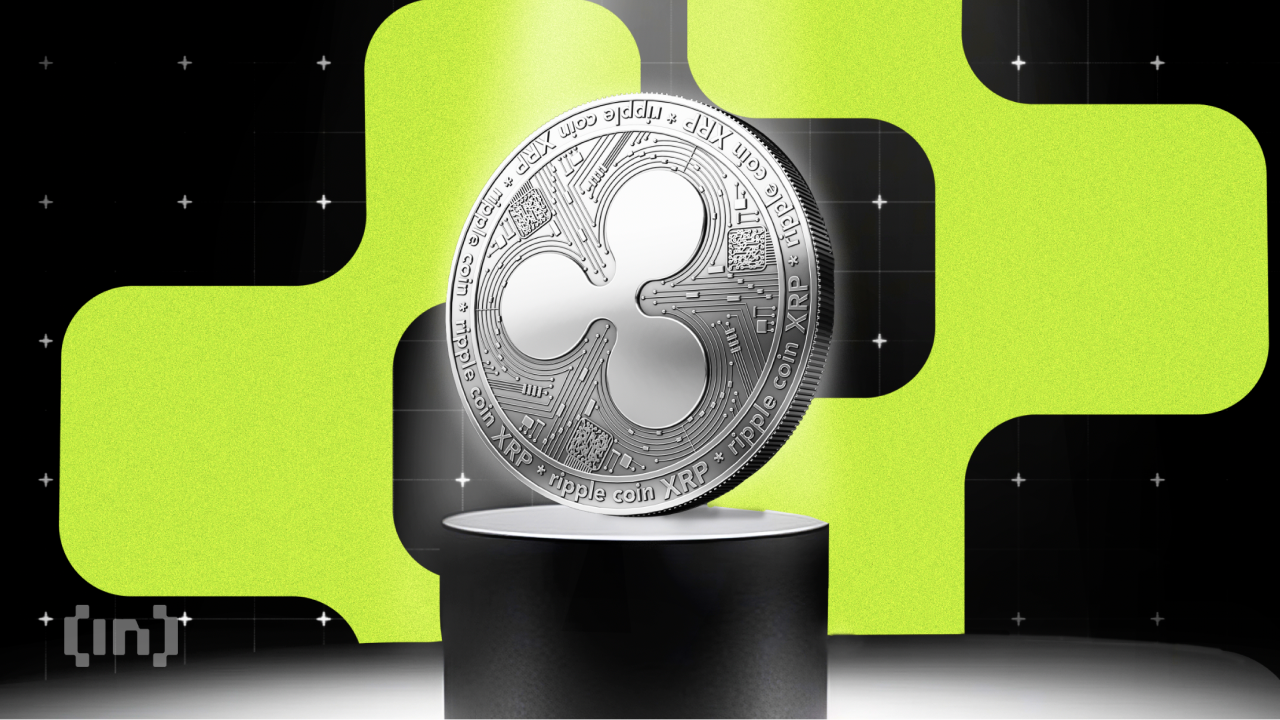

The SEC and Ripple’s joint motion to pause legal proceedings on their cross-appeal has been approved. Both parties will have 60 more days to agree on how to amicably end their legal battle.
The Ripple case has been moving toward a final resolution for over a month, but procedural hurdles keep the legal battle open. For example, the Commission cannot sign any agreement before Paul Atkins officially takes his seat as Chair.
When Will Ripple and The SEC Reach an Agreement?
The Ripple vs SEC case was one of the largest enforcement actions of the Gensler era, and it’s been wrapping up for over a month now. The Commission signaled that it would drop the case and then fully committed shortly afterward.
One remaining cross-appeal still stands between them and a final agreement, but they both proposed to settle. That proposal has made progress:
“The parties’ joint motion to hold the appeal in abeyance has been granted. The SEC is directed to file a status report within 60 days of this Order,” claimed James Filan, an observing attorney with no direct connection to either party.
Specifically, Ripple and the SEC filed a joint request last week to pause all courtroom appearances related to the cross-appeal. The two parties were making solid progress with an agreement and wished to save time and legal fees.
The SEC also made a similar joint request with Binance, claiming that the two parties had “productive talks” toward a settlement. That request differed slightly from the joint motion filed by Ripple and the SEC, as the Binance filing mentioned broader policy implications.
Still, today’s development shows that things can progress much faster than the 60-day deadlines.
Unfortunately, there are still a few obstacles to a speedy resolution. President Trump nominated Paul Atkins to be the next SEC Chair, and he successfully passed his confirmation hearings. The formal swearing-in ceremony hasn’t actually happened, though.
It’s a formality that could happen at any time, but procedural issues can still hold up the process.
That is to say, Atkins will need to Chair the SEC to approve a settlement with Ripple. The crypto industry is used to a chaotic and fast-paced business environment, but legal proceedings can take a very long time.
Ideally, Atkins could sign a settlement agreement as soon as he takes office. For all we know, however, more minor delays could continue.
Disclaimer
In adherence to the Trust Project guidelines, BeInCrypto is committed to unbiased, transparent reporting. This news article aims to provide accurate, timely information. However, readers are advised to verify facts independently and consult with a professional before making any decisions based on this content. Please note that our Terms and Conditions, Privacy Policy, and Disclaimers have been updated.
-

 Ethereum24 hours ago
Ethereum24 hours agoEthereum Metrics Reveal Critical Support Level – Can Buyers Step In?
-

 Market23 hours ago
Market23 hours agoSolana (SOL) Jumps 20% as DEX Volume and Fees Soar
-

 Market22 hours ago
Market22 hours agoHedera Under Pressure as Volume Drops, Death Cross Nears
-

 Market21 hours ago
Market21 hours agoEthena Labs Leaves EU Market Over MiCA Compliance
-

 Market20 hours ago
Market20 hours ago3 US Crypto Stocks to Watch Today: CORZ, MSTR, and COIN
-

 Market19 hours ago
Market19 hours agoBitcoin Price on The Brink? Signs Point to Renewed Decline
-

 Market17 hours ago
Market17 hours agoXRP Price Pulls Back: Healthy Correction or Start of a Fresh Downtrend?
-

 Altcoin17 hours ago
Altcoin17 hours agoRipple Whale Moves $273M As Analyst Predicts XRP Price Crash To $1.90






